Introduction
Throughout history, there have been numerous artistic movements and their bright representatives. It seems relevant to recall and discuss them to realize the cultural legacy of humankind. Below, a number of significant artists will be presented and their heritage explored.
Adelaide Labille-Guiard
Adelaide Labelle-Guiard is a French artist born on 11th April 1749 in Paris, France; she passed away on April 24, 1803 due to sickness. She was a daughter of a haberdasher and was one of the eight children who survived to adulthood. In 1974 she received education from pastelist Maurice Quentin de La Tour (Jonkman, 2020). In 1783 she was admitted to the Académie Royale de Peinture et de Sculpture. Labelle-Guiard was famous for her oil paintings, specifically of the human figure; she belonged to the art movement of portraitists and preferred to work with pastels (Jonkman, 2020).
Self-Portrait with Two Pupils is Adélade Labille-Guiard’s most significant piece of art. This lifesize, full-length painting of a contemporary lady sitting before her canvas encouraging younger ladies to draw by her example was signed and dated 1785 and presented in the Salon (Picture 1).
It implies that the artist’s goal as a freshly elected academician was to encourage more women to enroll, highlight their talents, and elevate their status within the academy, which is among her primary contributions to the movement of young women artists (Jonkman, 2020). Such an approach was innovative for that period of time. She is famous both locally and internationally for bestselling opals. During the time of Adelaide, women were not allowed to have the same education as the male carpenters in the art world; however, they were allowed admission into the Academy and were not permitted to study from live models. She had to overcome the male-dominated art world.
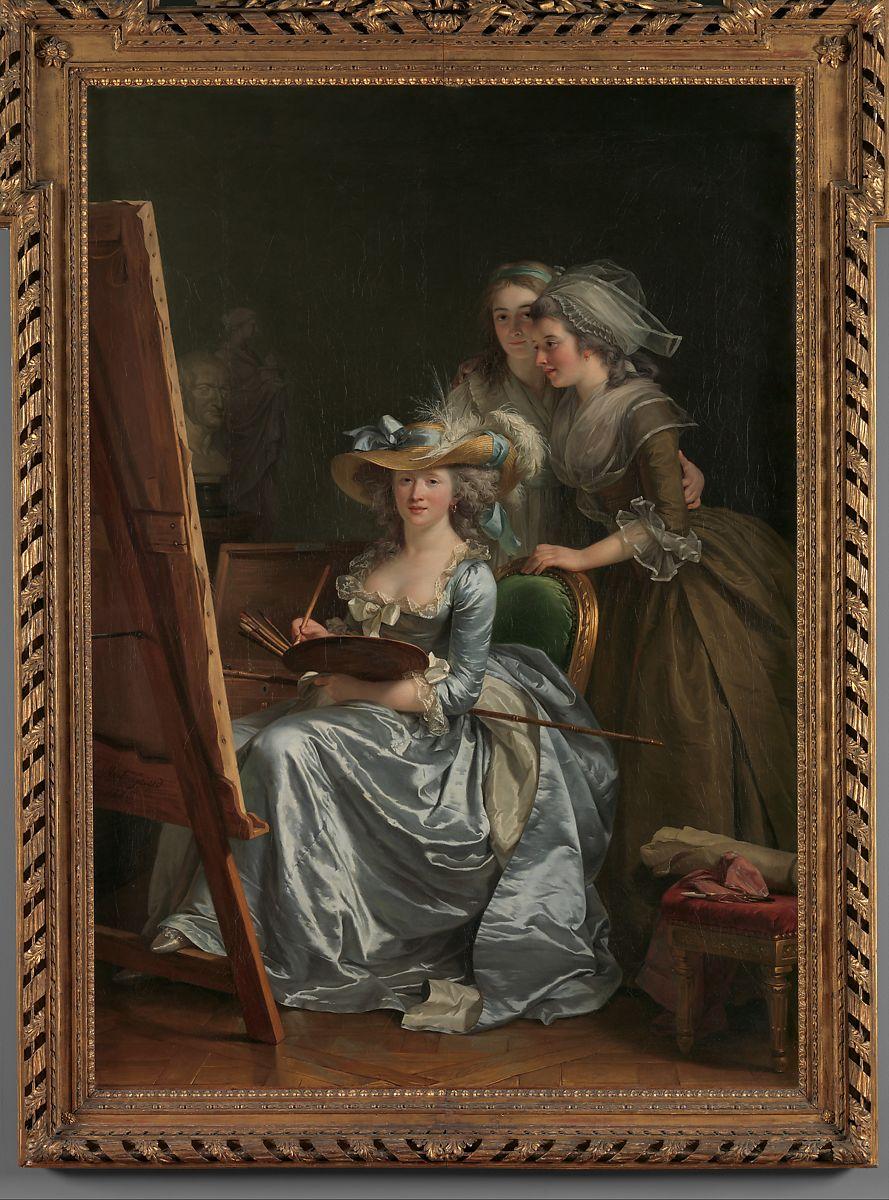
Joseph Wright
Joseph Wright, by the name of joseph wright of the Derby, was born on 3rd September 1734 in Derby, England. He was trained as a portrait painter by Thomas Hudson in 1750. His home was Derby; Joseph died on 29th August 1797 in Derby, England (Cole & Lambert, 2021). In 1760 he began painting pictures, his phrase, chiefly of scientific subjects. He quickly achieved a high reputation in this field, in which he was an innovator. He first exhibited at the Incorporated Society of Artists in 1765, showing there regularly until 1776, when he transferred to the Royal Academy.
Wright spent nearly two years in Rome, where he was overwhelmed by the remains of classical antiquity and drew assiduously; on his way home, he stopped briefly in Florence, Bologna, Venice, and other centers. When he returned, Wright abandoned his scientific and industrial scenes in favor of landscapes and literary subjects. After two years in Bath, Wright settled in his native Derby. Joseph wright Derby was famous for painting nocturnal scenes having specific light sources like candles (Picture 2). He contributed to the romanticism artistic movement, a musical and intellectual movement that originated in Europe.
His images of technical topics, which the Dutch admirers of Caravaggio somewhat influenced, were created between 1763 and 1773. Joseph Wright had several health issues in his middle years, including asthma and depression. As a painter, Wright is renowned for his innovative and dramatic application of light and shadow to modern, even avant-garde subjects, drawing inspiration from Italian Baroque iconoclast Caravaggio (1571/2-1610) and his Dutch followers. He is most renowned for employing chiaroscuro and diverse lighting methods in his artwork.
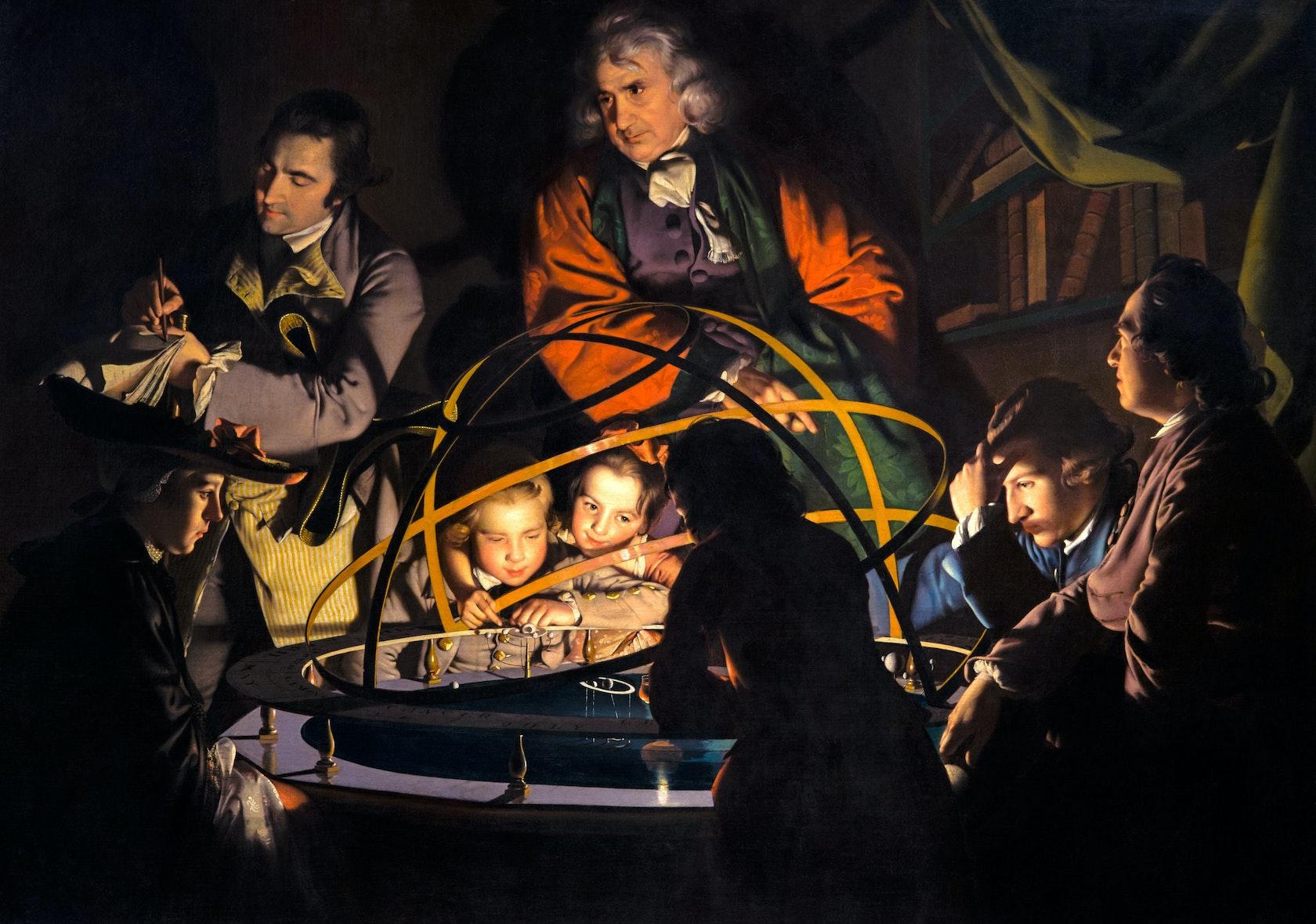
Rosa Bonheur
Rosa Bonheur was a French painter and sculptor, and her original name was Marie-Rosalie Bonheur. She was born on 16th March 1822 in Bordeaux, France. Bonheur was trained by her father, Raymond Bonheur, an art teacher and a follower of the social theorist Henri de Saint-Simon. Because of how well her creations were selling, Bonheur was able to buy a château-style estate in By, close to Fontainebleau, where she created most of her works. She died on 25th May 1899 in Château de by, near Fontainebleau. The medium she used for her artistic work was linked to landscape painting and the realist tradition of sculpture.
She received her training on how to paint from her father in 1822. Although stylistic movements were hard to identify, some artists addressed common societal issues, including the broad themes of racism and LGBTQ rights, which can be seen as a contribution to the realistic movement of that time. Her famous artwork was A lion’s head (Picture 3). Shattering female convention, she painted animals in lifelike, exacting detail, as considerable and wild as she wanted, studying them in their natural, mud-and-odor-filled settings, which, in turn, was an innovation.
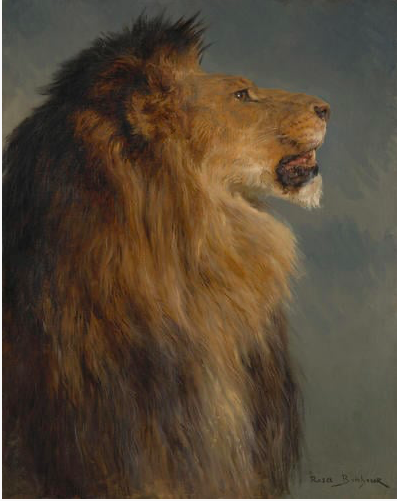
Paula Modersohn-Becker
Modersohn-Becker, Paula, a German artist. Paula Becker, who went by her given name, showed an early interest in painting and started studying drawing in 1888 when her family relocated to Bremen, Germany. He was born in Dresden, Germany, on February 8th, 1876. She received teacher training before enrolling in Berlin’s classic school for women in the arts. Paula passed away in Worpswede on November 30, 1907. She worked with paint as her medium.
She is recognized as a founder of the artistic movement known today as expressionism. Modersohn-Becker has a lifelong passion for naked anatomy and lives sketching by continuously depicting herself in a bikini, which was innovative for that time period. She had to deal with her pregnancy and the pressure of tradition. However, in at least some ways, Paula Modersohn-Becker is regarded as a real pioneer. She is credited with being one of the first modern women to paint a nude self-portrait while pregnant, which is presented in the picture below (Picture 4).
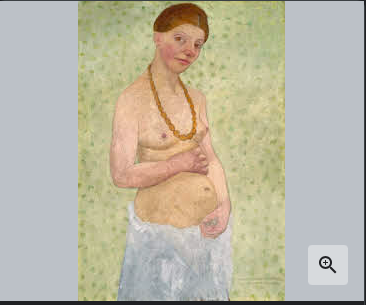
Paul Klee
The second child of Swiss soprano Ida Marie Klee, née Frick, and German music instructor Hans Wilhelm Klee (1849–1940), Paul Klee was born in Münchenbuchsee, Switzerland (1855–1921). His sister Mathilde was born on January 28, 1876, in Walzenhausen and passed away on December 6, 1953 (Hilewicz, 2018). Oil paint, watercolor, ink, pastel, and etching were all mediums employed by Klee.
He was one of the greatest painters of the 20th century and, although not being a part of any movement, he absorbed and even foresaw some of the most important trends in art. He created almost 9,000 paintings, sketches, and watercolors in a wide range of genres using both realistic and abstract techniques. His paintings, which are often modest in size, are notable for their subtle variations in line, color, and tone (Picture 5). Irony and a feeling of the ludicrous are combined with a passionate representation of the mysteries and majesty of nature in Klee’s highly complex artwork. His artwork frequently depicts opera and performers, and he sometimes uses them as models for his compositions, which was innovative for the period. His other interests, writing poetry and drawing, were not encouraged in the same way that music was.
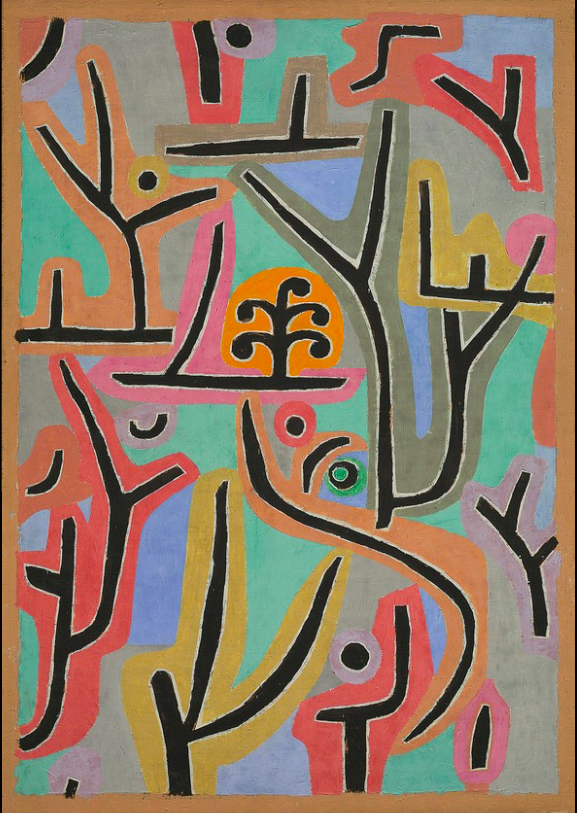
Georges Braque
Georges Braque was a significant French painter, collagist, draughtsman, printmaker, and sculptor of the 20th century. His full name is Georges Braque; he was born on 13 May, 1882, and passed away on 31 August, 1963. His associations with Fauvism beginning in 1905 and his involvement in the growth of Cubism were his most significant contributions (Plaut & Mount Vernon, 2021). Picasso’s work and that of Braque’s one was closely related throughout the period from 1908 to 1912. He mimicked stone and wood grain, mixed color with sand, and added a tremendous deal of texture to his paintings.
On May 13, 1882, Georges Braque was born in Argenteuil, Val-d’Oise. He was raised in Le Havre and received his training to become a home decorator and painter, like his father and grandparents. But from around 1897 to 1899, he also took evening classes in creative painting at the École supérieure d’art et design Le Havre-Rouen, formerly the École supérieure des Arts in Le Havre (Plaut & Mount Vernon, 2021). He apprenticed with a designer in Paris, where he received his certificate in 1902.
According to Braque, beauty is seen by an artist in terms of volume, line, mass, and weight, and through that, beauty interprets subjective impressions (Picture 6). He spoke of things broken into bits, fragmentation assisted me in creating the illusion of space and movement in space, which allowed me to get closer to the thing. He used a monochrome, neutral color scheme in the hope that it would draw attention to the topic.

Dorothea Tanning
Illinois’s Galesburg is where Dorothea Tanning was born on 25 August, 1910, and reared. Tanning attended Knox College and began working at the Galesburg Public Library after earning his high school diploma in 1926 from Galesburg Public High School (1928–30) (Gipson, 2022). After only two years of education, she dropped out to pursue an art career. She initially relocated to Chicago in 1930 before coming to New York in 1935, where she supported herself as a commercial artist while focusing on her painting. After an eight-year courtship, Tanning temporarily wed author Homer Shannon in 1941.
Tanning was a self-taught artist – using etching as her medium – except for the three weeks she spent in 1930 at the Chicago Academy of Fine Art. Many people consider Tanning a surrealist painter because of the surrealistic themes in her paintings from the 1940s and her close friendships with writers and artists in the Surrealist Movement. Nevertheless, she evolved her distinctive style throughout a six-decade artistic career (Etinde-Crompton & Crompton, 2019). Tanning’s paintings changed during the following ten years, becoming more suggestive and less explicit. Working in France’s Huismes and Paris, she started to depart from surrealism and forge her style (Etinde-Crompton & Crompton, 2019). Her visuals started to become more shattered and prismatic in the middle of the 1950s, as seen by pieces like Insomnias (Picture 7). She passed away on 31 January, 2012, at her Manhattan home.
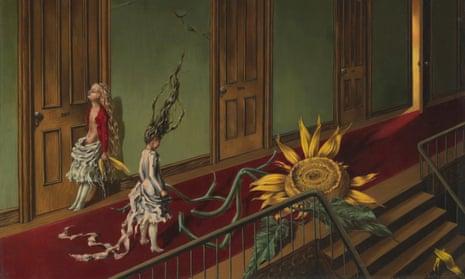
Marjorie Strider
Guthrie, Oklahoma, where was born in 1931, and before relocating to New York City in the early 1960s, Strider studied painting at the Kansas City Art Institute. The Pace Gallery’s 1964 “International Girlie Show” prominently displayed Strider’s three-dimensional paintings of beach ladies with “built out” curves with other pop artworks with “pin-up” influences by Rosalyn Drexler, Roy Lichtenstein, Andy Warhol, and Tom Wesselmann (Crawford, 2022). One of the inaugural shows of the then-new gallery, her humorously sexual Woman with Radish was transformed into the headline picture for the event.
She used mixed-media sculptures made of aluminum, acrylic, glitter, and sequins as an example (Picture 8). Her provocative figurative art of the time sought to challenge sexist stereotypes of women in popular culture by transforming objectified female bodies into frightening shapes that were visible in the face. Strider held two other solo exhibitions at the Pace Gallery in 1965 and 1966 (Crawford, 2022), continuing to display her copious paintings of women wearing bikinis alongside three-dimensional representations of fruits, vegetables, flowers, clouds, and other natural phenomena. Some of her rogue pours included household items (brooms, groceries, teapots), while others were utterly amorphous. These pieces distinguish Lynda Benglis’ floor paintings and soft sculptures from the same period in terms of style and aim.
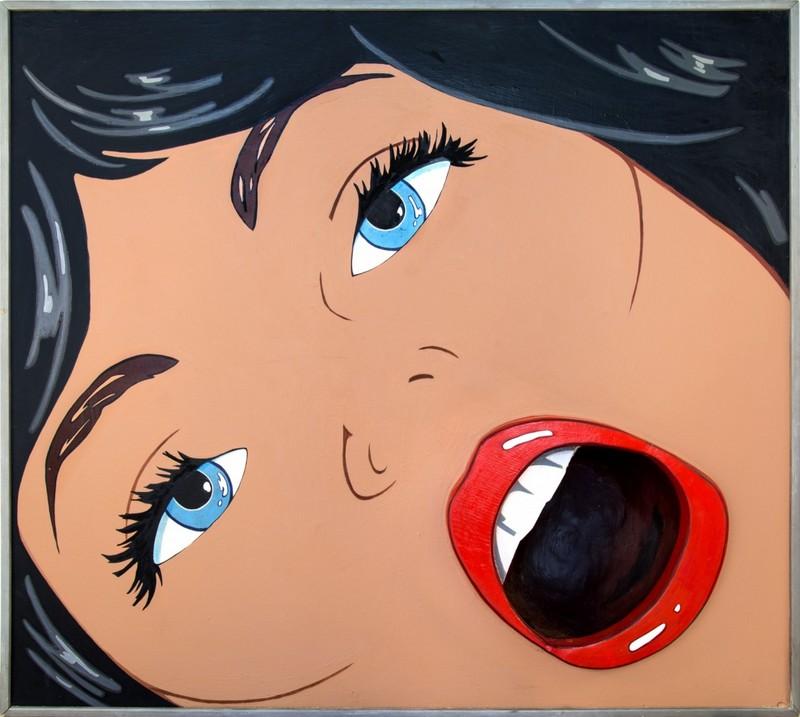
Yoko Ono
Japanese multimedia artist, singer, songwriter, and peace campaigner Yoko Ono (/ono/ OH-noh; romanized as Ono Yoko in English but typically written in katakana) was born on February 18, 1933. Her work also includes filmmaking and performance art. Ono was born and raised in Tokyo before relocating to New York City in 1953. Early in the 1960s, she was engaged with the Fluxus group and another downtown New York City artist’s scenes (Wierzbicki, 2022). She sprang to fame in 1969 when she wed English singer John Lennon of the Beatles. The honeymoon served as a platform for the couple’s anti-Vietnam War demonstrations.
Yoko Ono was and continues to be a significant conceptual artist who was close to the birthplace of the performance style. Cut Piece, which the artist presented from 1964 through 1966 and then again in Paris in 2003, is one of Ono’s most well-known performances. Yoko Ono participated in the ad by sitting in the museum wearing a stunning outfit and having scissors laying next to her. At the end of the performance, she was left bare since she had asked the audience members to approach her one at a time and cut off a part of her clothing.
Charles Jencks
Charles Alexander Jencks, the son of composer Gardner Platt Jencks and Ruth DeWitt Pearl, was born on June 21, 1939, in Baltimore, Maryland. Jencks attended Brooks School in North Andover, Massachusetts, and graduated from Harvard University with a Bachelor of Arts in English literature in 1961 and a Master of Arts in architecture in 1965 (Short, 2018). He also attended the Harvard Graduate School of Design. Jencks relocated to the UK in 1965 and established residences in London and Scotland. Being a landscape designer, he created the Garden of Cosmic Speculation – a famous piece of art.
Studying at University College London under renowned historian Reyner Banham, Jencks earned a Ph.D. in architectural history in 1970 (Short, 2018). This thesis served as the foundation for his 1973 book Modern Movements in Architecture, which examined twentieth-century architecture using semiotics and other literary criticism techniques. He belonged to the movement of Postmodernism in architecture, and made a significant contribution to the theoretical dimension of the field.
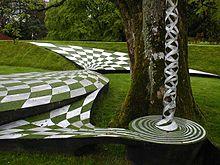
Conclusion
To conclude, the above artists can be considered as great representatives of their artistic movements. The discussion explores the essentials of their heritage showing the greatness of the power of art. All the presented artists have affected their field to a considerable extent.
References
Auricchio, L. (2009). Self-portrait with two pupils. Harvard Magazine. Web.
Bonheur, R. (1900). A lion’s head. Royal Collection Trust. Web.
Crawford, L. V. (2022). Harris (b. 1931). Native American women leaders: Fourteen Profiles, 125.
Etinde-Crompton, C., & Crompton, S. W. (2019). Henry Ossawa Tanner: Landscape Painter and Expatriate. Enslow Publishing, LLC.
Feigel, L. (2019). Dangerous appetites: the weird, wild world of Dorothea Tanning. The Guardian. Web.
Gipson, F. (2022). Women’s work: From feminine arts to feminist art. Frances Lincoln.
Harris, B., & Zucker, S. (2015). Georges Braque, The Portuguese. Smarthistory. Web.
Hilewicz, O. (2018). Reciprocal interpretations of music and painting: Representation types in Schuller, Tan, and Davies after Paul Klee. Music Theory Online, 24(3).
Jones, J. (2008). My artist of the year? The 18th-century genius Joseph Wright of Derby. The Guardian. Web.
Jonkman, M. (2020). ‘Mille complimens et amitiés’: Friendships in the making of Gerard van Spaendonck’s Parisian career. Netherlands Yearbook for History of Art/Nederlands Kunsthistorisch Jaarboek Online, 70(1), 336-361.
Klee, P. (1938). Park near Lu. Artsy. Web.
Lin, A. (2011). Garden of cosmic speculation. Flickr. Web.
McNay, A. (2016). Paula Modersohn-Becker: An intensely artistic eye. Studio International. Web.
Plaut, A., & Mount Vernon, I. A. (2021). The Grand Trompe L’oeil of Georges Braque.
Short, J. F. (2018). Reflections on disciplines and fields, problems, policies, and life. Annual Review of Criminology, 1, 1-18.
Strider, M. (1963). Welcome 1963. Artmap. Web.
Wierzbicki, J. (2022). Avant-Garde. In When Music Mattered (pp. 131-171). Palgrave Macmillan, Cham.